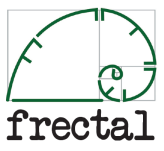As an Emergency Physician, one of the key routes to survival at the coal face is, in my humble opinion, seeking to harness the patterns one sees in ones practice.
I’ve explained elsewhere that Emergency Medicine is a classical example of Complex Adaptive System, with some simple elements, some more complicated, sometimes on the edge of chaos, but often complex..
So some of the patterns that I see and talk about in Emergency Medicine include;
.. a walk into the resuscitation room first thing on a shift.. anyone in trouble.. if so use the ABC pattern.. is their Airway OK/ how about their Breathing?/then their Circulation.
.. then who is waiting longest in the Emergency Department? what are they waiting for? a decision? some advice?
.. does that patient need to be admitted? are they safe to go home?
.. are they happy with the plan? do they have any questions? do they have a safety net in place?
These patterns I see every shift I’ve done and they help to navigate through..
Of these one that I think may be most important ;” is the patient happy with the plan”.
That is I have a general rule of thumb not to send a patient home unless they are happy to go home.
That is not to say that I will have had as much time to spend with them as I would like, I may not have ordered every test they wanted, I may not have offered a diagnosis or been able to cure their ills… but I hope they’ll understand I’ve tried.
As the West faces a growing mountain of healthcare needs with an aging population, reduced tax base etc we will have to work smarter rather than harder. I’m pretty sure that will involve a significant shift in the patient/provider relationship.
Physicians will have to move from a paternalistic I’ll tell you what you need to do approach, towards a brokering approach, where information is key to the discussion between patient and physician.
By explaining the process of history taking , examination, available investigations and treatments we should open up our approach to clinical problem solving and decision making. Rather than keep information to ourselves /order an expensive test to cover all possibilities/suggest a diagnosis when we don’t have one/ offer a token treatment that is unproven, we are better to admit that sometimes we face dilemmas and conundrums and are not sure what to do with our patients.
I find myself explaining that medicine is as much art as science, that its key that patients understand the dilemmas I have in their care, that I’m not sure what the right thing to do is and that I’d like us to agree between us what to do next.
In many cases that will result in a patient who seems glad they’ve been consulted, understands why we aren’t doing that expensive test today, willing to see what course their illness takes rather than take too much medication.
I offer one more pattern that usually help as we close the consultation.. (A) If things get worse you can come back to the Emergency Department (B ) If things dont get better you are likely to need another review by a doctor in x days .. (C) I hope you get better, you probably will as nature takes it course and if it does then great.
Though its been a part of my practice for several years now, its only recently that I’ve realised a name has been coined for the approach. Its being called Shared Decision Making and its now been promoted across the NHS and further afield.
My sense is that Shared Decision Making will be key to the future of 21st Century Healthcare..





Leave a comment